#painter is frans hals
Text
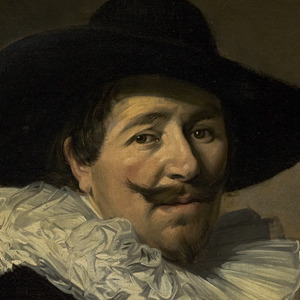
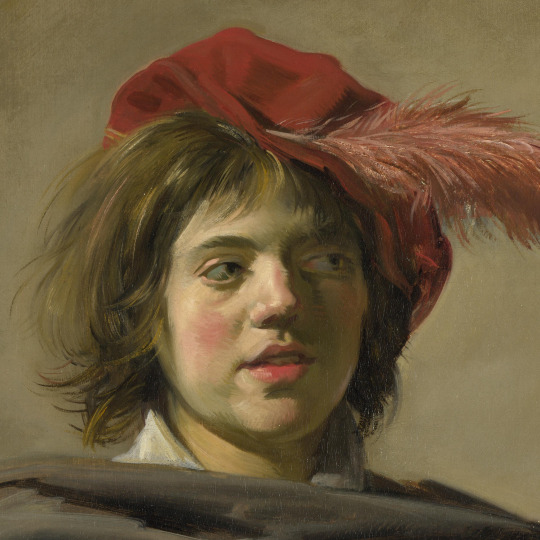




...You know I even think that she stared like you...
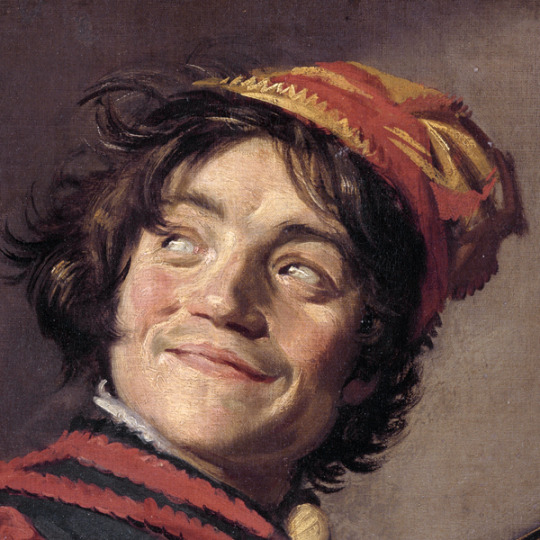

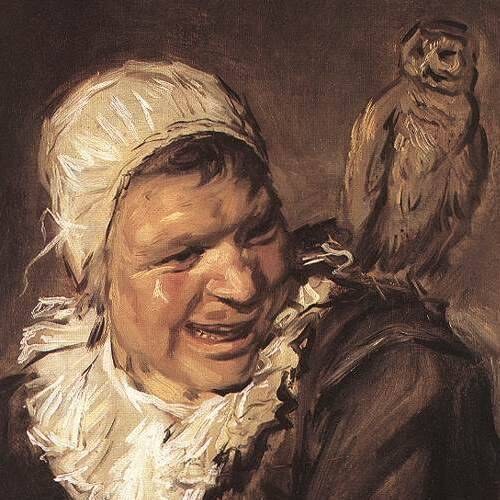
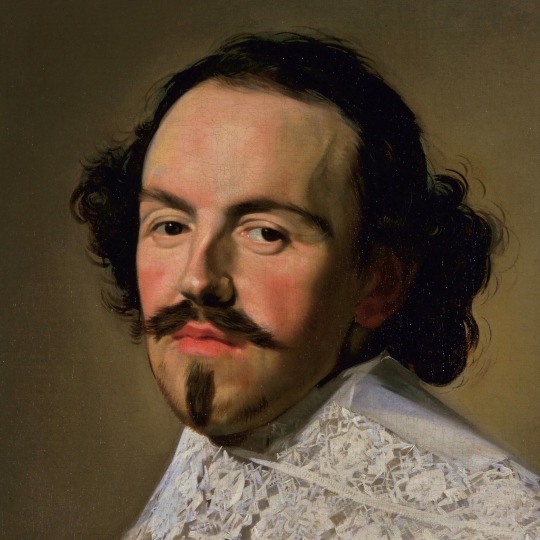
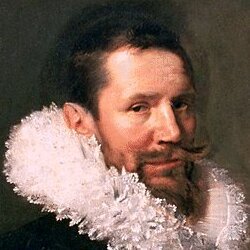

...She used to just stand there and stare...

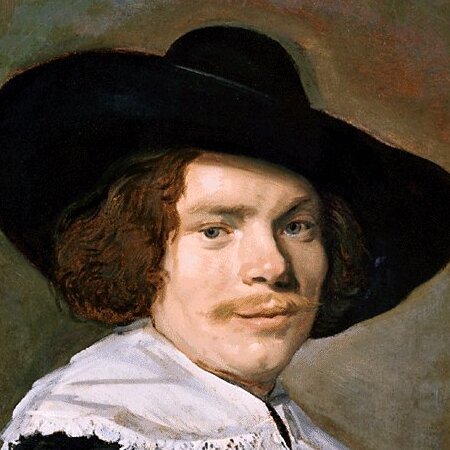
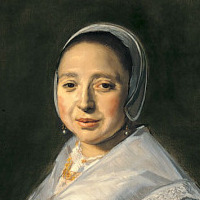

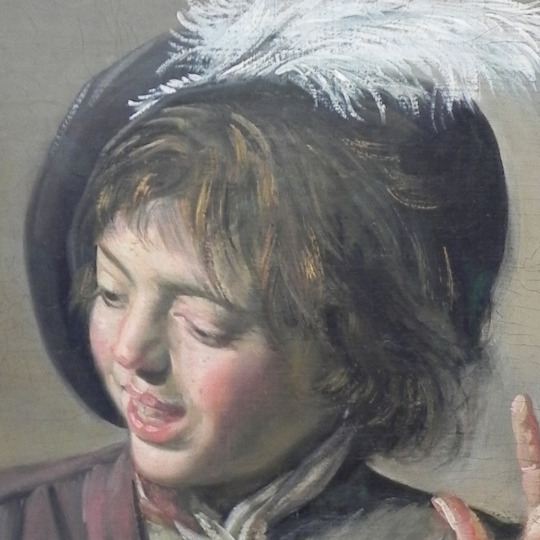

...And roll her eyes right up to heaven...


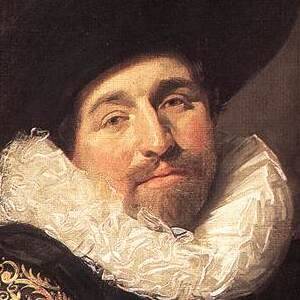


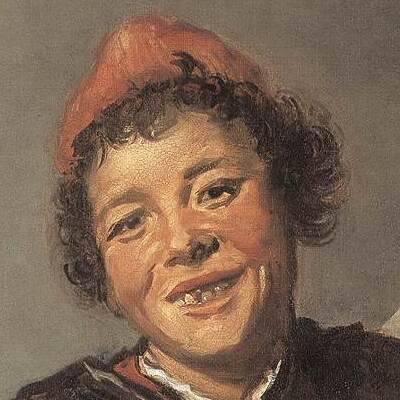
The amazing microexpressions of Frans Hals
#frans hals#frans hals portraits#portrait#portraits#character expressions#expressions#expressive#painting aesthetic#paintings#painting#baroque painting#baroque art#baroque#17th century art#17th century#art#dutch#dutch painter#dutch painting#dutch artist#dutch art#microexpressions#the cure#catch#catch the cure#art collage#collage art#collage#oil painting#painting art
9 notes
·
View notes
Text
My grandpa was shocked I didn't know the painter Frans Hals. So I was like "So? Do you know who Thomas Malory is? Chrétien de Troyes? Alfred Lord Tennyson? T. H. White?" He did not. And later my mum corrected him on how he pronounced Frans Hals' name so I got him back
#thomas malory#chretien de troyes#alfred lord tennyson#t.h. white#frans hals#dutch painters#personal#my family
0 notes
Text
Diploma main diploma 3/3
"Dutch baroque masters portraits" Reproduction
Frans Hals -portrait of John Livingston
100x70 oil on canvas
1.2022 - 2.2022





Yea 1 month i have only 3 pics of it cuz i finished it in 20hours ( 1 pic was 1 session and it applies to previous ones also exept Vermeers cuz they told us to do a lot so sometimes i did 2x times then but this and later Vermeersand whole Rembrandt i had 1 pic after finishing session )also it was the most fun suprisingly to paint and relaxing i did a lot progress fast and its the only one where the face is finished... Well almost to my standards but my teacher told me its too well enough for this and "time n stuff " For it , its a contract for sure compared to the last 2 with bouth time spend on it and how finished the face is xddd
#my art#old art#artists on tumblr#drawing#art diploma#traditional painting#portrait painting#art reproduction#dutch baroque#dutch golden age#dutch painter#frans hals#artwork#art#art tags#myart#female artists#art on tumblr#oil paint#oil painting#traditional art
1 note
·
View note
Text

Young Man and Girl in an Inn, 1623 by Frans Hals (1582-1666), oil on canvas, 105,4x79,4 cm
1 note
·
View note
Text
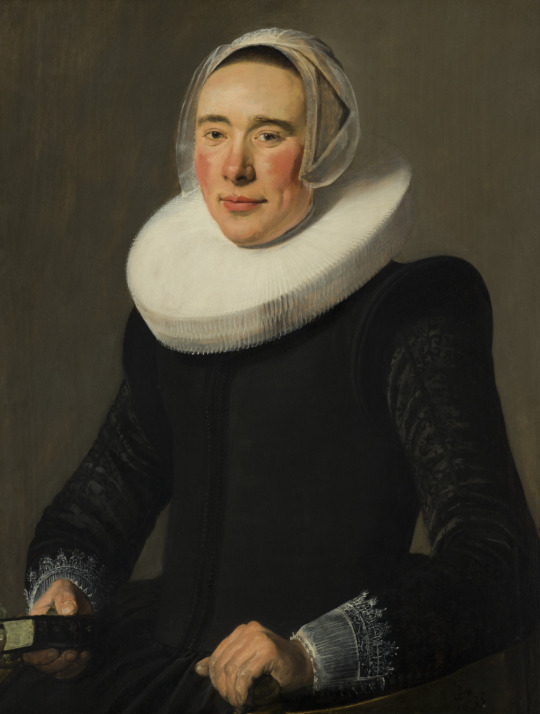
Judith Leyster (Dutch, 1609-1660): Portrait of an unknown woman (1635) (via Frans Hals Museum)
From the museum website:
Judith Leyster was the first woman to become a member of Haarlem’s Saint Lucas guild of painters. She took her name from her father’s distillery, De Leystarre. Whether Leyster studied under Frans Hals (1582/3-1666) – as is commonly assumed – is debatable. While she did build on innovations that Hals had introduced into painting, she did so in her own way. This painting was long thought to have been by Frans Hals. Judith Leyster’s monogram, JL*, was simply overlooked.
#judith leyster#early women painters#early women artists#seventeenth century#dutch painters#women artists#women painters#art#painting#portrait
91 notes
·
View notes
Photo

Nicolaes Roosendael - The good Samaritan heals the traveller - 1665
oil on canvas, height: 162.5 cm (63.9 in) Edit this at Wikidata; width: 144 cm (56.6 in)
Frans Hals Museum, Haarlem, the Netherlands
Nicolaas Roosendael (1634, Hoorn – 1686, Amsterdam), was a Dutch Golden Age painter.
136 notes
·
View notes
Photo

Cornelis van Haarlem - Self-portrait
Cornelis Corneliszoon van Haarlem (1562 – 11 November 1638) was a Dutch Golden Age painter and draughtsman, one of the leading Northern Mannerist artists in the Netherlands, and an important forerunner of Frans Hals as a portraitist.
That said, many of his works are bizarre to say the least.
55 notes
·
View notes
Photo

Rijksmuseum Director Calls For Return of a Stolen Frans Hals Painting
As the
Rijksmuseum
prepares for an exhibition of 50
Frans Hals
paintings
set to open this Friday
, its director general Taco Dibbits, during a press conference, made a plea with the criminal underworld to return Hals’s 1626 picture
Two Laughing Boys with a Mug of Beer
in time for the exhibition. The work was stolen,
for the third time
, in 2020 from the
Museum Hofje van Mevrouw van Aerden
.
“That is an amazing painting,” said Dibbits, according to a report by The Guardian. “Usually he [Hals] paints a group portrait or people on their own and here you see two boys interacting. That is something we would love to show, and I really hope this painting will be rediscovered. This is a painting that belongs to us all.”
The painting is believed to have been stolen by the same outfit that stole an early Van Gogh in 2020 from the Singer Laren Museum. But unlike the Van Gogh, which was returned to the “art detective” Arthur Brand and will go on view this March at the Groninger Museum in the Northern Netherlands, the Hals has yet to surface. ...
... “Frans Hals is one of the greatest painters of the 17th century, one of those painters who really captures laughing people, that fleeting movement, with quick brushstrokes and this enormous energy,” said Dibbits at the press conference. “Frans Hals invented modern painting.”
3 notes
·
View notes
Text

Nicolas de Staël (1914 - 1955), Composition, signed; signed and dated Octobre 1949 on the reverse, oil on canvas.
Note: Executed in 1949, the richly impastoed Composition exemplifies Nicolas de Staël’s unique form of abstraction. According to the artist, “one simply cannot think of any object whatsoever, because there are simultaneously so many objects that the ability to take them in falters and fades” (Nicolas de Staël quoted in: Denys Sutton, Nicolas de Staël, Paris 1960, p. 61). Proceeding from this prismatic concept of material reality, de Staël pursued an evocatively abstract style that ultimately developed to incorporate representational elements. In many ways, the present work anticipates the mimetic content of de Staël’s later corpus; only a short distance separates it, for example, from Agrigente (1953) at the Kunsthaus, Zurich. Composition equally boasts an impressive provenance, hailing from a superlative private collection of nineteenth and twentieth-century art, assembled by eminent Swedish surgeon Philip Sandblom and his wife Grace over a period of seventy years. Including the finest works by modern masters such as Delacroix, Cézanne, Seurat, Picasso, and Mondrian, over time the Sandblom Collection has donated several masterpieces to the National Museum and Moderna Museet in Stockholm.
Composition epitomises the transformation that de Staël’s painting underwent in 1949, whereby dramatic, stormy, and more clearly cubist-influenced compositions achieved a new tranquillity and simplification. This distinction marks the arrival of de Staël’s mature idiom, first based upon the organisation of irregular geometric shapes into contrasting, often architecturally delineated, fields of colour. In March of 1950, the Musée National d’Art Moderne in Paris acquired a similarly transitional painting, Composition (Les Pinceaux) of 1949. In keeping with his staunch independence from artistic groups and movements, de Staël requested this work be exhibited outside of the galleries devoted to abstract art, and instead above the main staircase. He did nevertheless seek out mentors, foremost among them Georges Braque, his neighbour in Paris during the 1940s. Following de Staël’s death, Braque expressed deep admiration for his friend: “De Staël was a painter; he had the true sense of painting… he was always seeking freedom. He succeeded in evolving. Basically, painting is like love. It is direct, it is power. And it was that way for de Staël” (Georges Braque quoted in: ibid., p. 20).
In January of 1949, de Staël travelled back to Brussels, the city of his orphaned youth, and visited Amsterdam and The Hague where he particularly admired the heavy admixtures of black pigment in paintings by Rembrandt van Rijn and Frans Hals. The palette of black, red, and golden yellows that composes so many of Rembrandt’s self-portraits, and other classic paintings like The Jewish Bride (circa 1667) or Syndics of the Drapers’ Guild (1662) in Amsterdam’s Rijksmuseum, is immediately evident in Composition. Like The Jewish Bride, the present work’s brighter passages contrast directly with a mass of deep green-black pigment occupying nearly half the canvas, a formal arrangement strikingly like that of Rembrandt’s newly wedded pair. De Staël’s emulation of earlier Dutch chiaroscuro is equally matched by heavy modelling, achieved through liberal use of a palette knife. Much like Rembrandt, de Staël chose high-quality materials and only employed oil paint, in contrast to contemporaries like Jean Dubuffet who experimented by incorporating unorthodox materials like sand or sawdust.
Following the artist’s death, British art historian Douglas Cooper wrote: “de Staël was unique among the painters of his generation in that he stood out against an easy-going acceptance of the non-figurative aesthetic and insisted on the responsibility of any serious painter to try and reconcile the pattern of abstract forms and arbitrary colours, which are the constituent elements of every picture, with the facts of a visual experience” (Douglas Cooper, ‘Nicolas de Staël: In Memoriam’, The Burlington Magazine, Vol. 98, No. 638, May 1956, p. 140). Composition testifies to this drive, evincing de Staël’s place among the foremost modern painters of the Twentieth Century.
Courtesy Alain Truong
11 notes
·
View notes
Photo


“Portrait of a Bearded Man with a Ruff”, c.1625 by Frans Hals (1582–1666). Dutch painter, celebrated portraitist and genre painter. Met Museum, NY. oil on canvas
73 notes
·
View notes
Text
The Concert - Judith Leyster oil painting

Judith Leyster
(July 28, 1609 – February 10, 1660) was a Dutch painter of the Baroque period.
#OnThisDay - Judith Leyster was born on July 28th. In Haarlem, The Netherlands.
On Friday before the weekend, a painting suits her - The Concert was created around 1633.
She was a student of Frans Hals in Haarlem. In 1633, as the first woman, a master's title in the Haarlem guild of St. Luke. In 1636 he married Jan Miense Molenaer, a painter of genre scenes (ca. 1610-1668). It runs a shared studio, works with these similar models and props. She painted genre scenes, portraits and flowers. The Utrecht Caravaggists (Hendrick Terbrugghen, Gerrit van Honthorst) and Frans Hals had a great influence on her painting. The painting is in the National Museum of Women in the Arts Washington, United States.
#Judith#Leyster#painter#theconcert#friday#weekend#piątek#piąteczek#piątunio#Haarlem#netherlands#Hals#Molenaer#baroque#barok#malarze#artyści#NationalMuseumofWomenintheArts#Washington#UnitedStates
2 notes
·
View notes
Photo

MWW Artwork of the Day (3/20/23)
Judith Leyster (Dutch, 1609-1660)
A Boy and a Girl with a Cat and an Eel (c. 1629-30)
Oil on wood, 59 x 49 cm.
National Gallery, London
It has recently been suggested that this painting serves as a warning against foolish and mischievous behavior. The boy has used the small eel to entice the cat into his grasp and then withholds the bait, while the girl teases the cat further by pulling its tail. Judging by its extended claws the cat is about to scratch the boy. The picture thus seems to allude to the Dutch saying: 'He who plays with cats gets scratched', meaning he who looks for trouble will get it. It was common in Dutch 17th-century painting to use children in order to point out the foolish behavior of adults. Judith Leyster, a painter of genre scenes, portraits and still lifes. The broad brushstrokes, the cropped composition and the depiction of youthful happiness all show Frans Hals’ influence on Leyster. (from the NG catalog)
For more of this artist's work, see this MWW Special Collection:
https://www.facebook.com/media/set/?set=a.1382292458542786&type=3
6 notes
·
View notes
Text
JUDITH LEYSTER // PAINTER
“She was a Dutch Golden Age painter and genius. Almost forgotten because until 1893 all her work was attributed to Dutch painter Frans Hals or to her husband, artist Jan Miense Molenaer. She was possibly the first woman member of the artists' trade organisation, the Haarlem Guild of St Luke, but it could have been fellow artist Sara van Baalbergen. You can see Judith's work in the Rijksmuseum, Amsterdam; the Mauritshuis, The Hague; the Frans Hals Museum, Haarlem; the Louvre, Paris; the National Gallery, London; and the National Gallery of Art, Washington, DC.”


0 notes
Text
A Journey Through Time: Rijksmuseum's Historical Collections
The Rijksmuseum tours in Amsterdam is renowned for its extensive and impressive collection of art and artifacts that span centuries of Dutch history. The museum, opened in 1885, is a national museum of the Netherlands and is dedicated to the arts, crafts, and history of the country. Let's take a journey through time by exploring some key highlights from the Rijksmuseum' tickets historical collections:
Medieval Art (1200-1600):
The Rijksmuseum houses an array of medieval art, including illuminated manuscripts, religious artifacts, and sculptures. Notable works include intricately detailed altarpieces and religious paintings that provide insight into the religious and artistic practices of the time.
The Dutch Golden Age (17th Century):
This period, known as the Dutch Golden Age, was a time of economic prosperity and cultural flourishing in the Netherlands. The Rijksmuseum features masterpieces from renowned Dutch painters such as Rembrandt, Vermeer, and Frans Hals. Rembrandt's famous painting "The Night Watch" is one of the highlights, showcasing the artist's mastery of light and shadow.
Delftware and Decorative Arts:
The museum boasts an extensive collection of Delftware, the distinctive blue and white pottery that originated in the city of Delft. These ceramics were highly prized during the 17th century and remain iconic examples of Dutch craftsmanship. Additionally, the museum displays exquisite examples of decorative arts, including furniture and silverware.
Maritime History:
Given the Netherlands' rich maritime history, the Rijksmuseum has an impressive collection of maritime artifacts. This includes scale models of ships, navigational instruments, and maritime paintings. The collection reflects the nation's seafaring prowess during the Age of Exploration.
Asian Art and Artefacts:
The Rijksmuseum's collection isn't limited to European art alone. It also houses a diverse array of Asian art and artifacts, reflecting the Dutch East India Company's trading connections with Asia during the 17th and 18th centuries. This section includes ceramics, textiles, and sculptures from various Asian cultures.
19th-Century Romanticism:
The 19th century saw a shift in artistic styles, and the Rijksmuseum captures this transition with works from the Romantic period. Paintings from artists like Jozef Israëls and Johan Barthold Jongkind are featured, depicting landscapes and scenes that evoke emotion and introspection.
Modern and Contemporary Art:
The Rijksmuseum is not solely focused on historical art; it also has a collection of modern and contemporary works. This includes pieces by artists like Vincent van Gogh and Piet Mondrian, showcasing the evolution of Dutch art into the 20th century.
Visiting the Rijksmuseum is like embarking on a visual journey through the rich tapestry of Dutch history and culture. The diverse collections offer a comprehensive view of the artistic and historical developments that have shaped the Netherlands over the centuries.
0 notes
Text

'Portrait of Samuel Ampzing' as painted in 1630 by Dutch painter Frans Hals (1582-1666). Ampzing (1590 - 1632) was a Puritan clergyman/minister and a published poet, hence his depiction holding a book.
1 note
·
View note
Photo

Charles de Groux - Blessing before supper - 1861
oil on canvas, height: 41.3 cm (16.2 in); width: 78.2 cm (30.7 in)
Museum of Fine Arts Ghent (MSK), Belgium
Charles de Groux or Charles Degroux (25 August 1825 – 30 March 1870) was a French painter, engraver, lithographer and illustrator. As he moved to Belgium at a young age and his whole career took place in Belgium he is usually referred to as a Belgian artist. His depictions of scenes from the life of the disadvantaged and lower-class people of his time mark him as the first Belgian social realist painter. These works made him the precursor of Belgian Realist artists such as Constantin Meunier and Eugène Laermans.
De Groux' social realist works contain many religious overtones and references. This is obvious in his The blessing before supper, a solemn depiction of a peasant family saying grace before supper. The painting was closely linked to Christian representations of the Last Supper.
Vincent van Gogh is known to have admired de Groux's work The blessing before supper. Van Gogh's The Potato Eaters was inspired by this work of de Groux.[ Van Gogh also praised de Groux for his excellent 'types'. He was of the view that de Groux' studies and drawings displayed the same 'white-hot' passion that he found in the head studies of Frans Hals and Honoré Daumier, and in the novels of Zola and Balzac.
12 notes
·
View notes